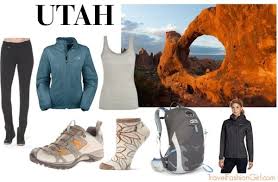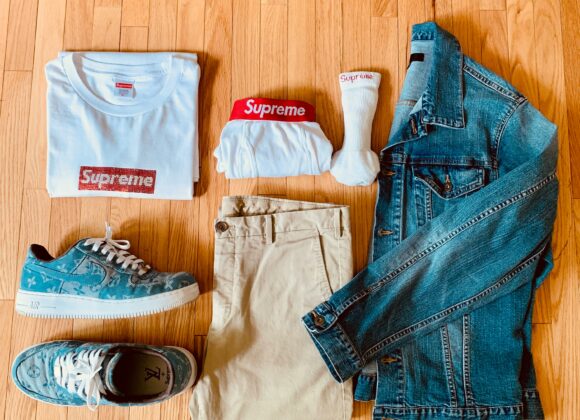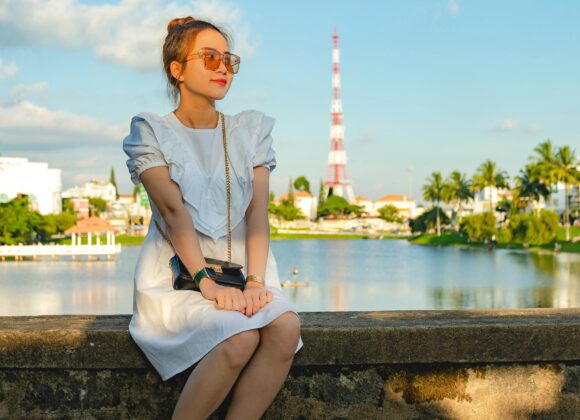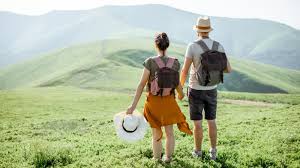Utah is a land of extremes—towering red rock formations, alpine forests, desert canyons, and snow-capped peaks. With five national parks (known as the Mighty 5) and countless state parks and recreation areas, it’s a dream destination for outdoor lovers. But with such diverse terrain and unpredictable weather, packing the right clothing can make or break your trip.
Whether you’re planning to hike the Narrows in Zion, explore the hoodoos of Bryce Canyon, or enjoy the upscale charm of Park City, this guide will help you dress smart, stay comfortable, and look great while doing it.
🧭 Understanding Utah’s Climate and Terrain
Before diving into your packing list, it’s important to understand the climate zones you’ll encounter:
- Desert Regions (Zion, Arches, Canyonlands): Hot summers, chilly nights, and dry air. Temperatures can soar above 100°F in July and drop below freezing in winter.
- High Elevation Parks (Bryce Canyon, Capitol Reef): Cooler year-round, with snow possible from late fall through early spring.
- Mountain Areas (Park City): Alpine climate with snowy winters and mild, dry summers.
This means layering is key. You’ll want to be prepared for sun, wind, rain, and even snow—sometimes all in the same day.
👕 What to Wear in Utah’s National Parks: The Essentials
Here’s a breakdown of must-have clothing items for any national park visit in Utah:
1. Moisture-Wicking Base Layers
Start with a breathable base layer that pulls sweat away from your skin. This helps regulate your body temperature and keeps you dry during hikes.
- Best for: All seasons
- Materials: Merino wool, polyester blends
- Avoid: Cotton—it traps moisture and can lead to chafing or chills
2. Convertible Hiking Pants
These zip-off pants are perfect for Utah’s fluctuating temperatures. Start the day with full-length pants and zip them off into shorts as it warms up.
- Bonus: They protect your legs from sunburn, bugs, and brush.
3. Sun-Protective Shirts
Long-sleeve shirts with UPF protection are ideal for desert hikes. They shield your skin from UV rays while keeping you cool.
- Look for: Lightweight, breathable fabrics with ventilation panels
4. Insulating Mid-Layers
For early mornings or high elevations, pack a fleece or insulated jacket. Down or synthetic puffers are lightweight and packable.
- Best for: Bryce Canyon, Capitol Reef, and winter visits
5. Waterproof Outer Layer
A lightweight rain jacket is essential. Utah’s weather can change quickly, especially in spring and fall.
- Pro tip: Choose one with pit zips for ventilation during hikes.
6. Sturdy Hiking Boots
Footwear is arguably the most important item. Choose boots with ankle support and grippy soles for rocky trails.
- Break them in before your trip to avoid blisters.
7. Accessories
- Wide-brim hat: Shields your face and neck from the sun
- Sunglasses: Polarized lenses reduce glare
- Buff or neck gaiter: Protects from dust, sun, and wind
- Wool socks: Prevent blisters and wick moisture
🥾 What to Wear to Zion National Park
Zion is one of the most visited national parks in the U.S., known for its towering sandstone cliffs, slot canyons, and iconic hikes like Angels Landing and The Narrows.
🌞 Summer (June–August)
- Lightweight, quick-dry clothing: Temperatures often exceed 100°F
- Water shoes or closed-toe sandals: Essential for hiking The Narrows
- Hydration pack: You’ll sweat more than you think
- Sun protection: Hat, sunglasses, and UPF clothing are non-negotiable
🍂 Spring & Fall (March–May, September–November)
- Layered clothing: Mornings are cool, afternoons warm
- Rain jacket: Flash floods are a risk in slot canyons
- Trail runners or hiking boots: Good grip is essential
❄️ Winter (December–February)
- Insulated jacket and gloves: Snow is rare but possible
- Microspikes: For icy trails like Emerald Pools
🧣 What to Wear in Park City, Utah
Park City is a stylish mountain town known for its ski resorts, Sundance Film Festival, and charming Main Street. It’s a different vibe from the national parks—think mountain chic meets après-ski glam.
❄️ Winter (December–March)
- Ski gear: Waterproof ski pants, insulated jacket, thermal base layers
- Snow boots: For walking around town
- Accessories: Beanie, gloves, and neck warmer
- Après-ski attire: Cozy sweaters, jeans, and boots for dining out
🌼 Spring (April–May)
- Layered outfits: Snow may linger in April, but May brings sunshine
- Light jacket or fleece: For chilly evenings
- Hiking shoes: Trails begin to open up
🌞 Summer (June–August)
- Casual mountain wear: T-shirts, shorts, hiking sandals
- Light sweater or jacket: Evenings can dip into the 40s
- Sunglasses and sunscreen: The sun is intense at high altitudes
🍁 Fall (September–November)
- Flannel shirts, jeans, and boots: Perfect for leaf-peeping
- Insulated vest or jacket: Especially in October and November
🧳 Packing Tips by Season
| Season | Clothing Tips |
|---|---|
| Spring | Layers, waterproof jacket, hiking boots, sun protection |
| Summer | Breathable fabrics, hydration gear, sun hat, trail shoes |
| Fall | Warm layers, windbreaker, gloves for early mornings |
| Winter | Thermal base layers, insulated outerwear, snow boots, traction devices |
🏕️ Park-Specific Clothing Tips
Arches National Park
- Hot and dry: Wear light-colored, breathable clothing
- Slickrock hiking: Grippy shoes are a must
- Evening chill: Bring a hoodie or light jacket
Bryce Canyon National Park
- High elevation: Cooler year-round
- Snow possible: Even in spring and fall
- Layer up: Fleece, gloves, and beanie recommended
Canyonlands National Park
- Remote and rugged: Durable clothing and boots
- Sun exposure: Little shade—bring a wide-brim hat
- Backcountry gear: If camping, pack for extremes
Capitol Reef National Park
- Mixed terrain: From orchards to slot canyons
- Versatile clothing: Convertible pants and layers
- Waterproof shoes: For creek crossings
🧼 Bonus Tips for Staying Comfortable
- Pack extra socks: Dry feet = happy hiker
- Use anti-chafing balm: Especially in hot weather
- Bring a change of clothes: For post-hike comfort
- Don’t forget swimwear: Some parks have rivers or hot springs
🧠 Common Mistakes to Avoid
- Wearing cotton: It holds moisture and can cause chills
- Overpacking: Focus on versatile, multi-use items
- Ignoring the forecast: Utah weather can be extreme and unpredictable
- Skipping sun protection: Even in winter, UV rays are strong at elevation
🎒 Sample Packing List for a 5-Day Utah Adventure
| Item | Quantity |
|---|---|
| Moisture-wicking shirts | 3–4 |
| Long-sleeve UPF shirts | 2 |
| Convertible hiking pants | 2 |
| Shorts | 1–2 |
| Fleece or insulated jacket | 1 |
| Rain jacket | 1 |
| Hiking boots | 1 pair |
| Water shoes/sandals | 1 pair |
| Wool socks | 4–5 pairs |
| Hat and sunglasses | 1 each |
| Gloves and beanie (if needed) | 1 set |
| Swimsuit | 1 |
| Casual evening outfit | 1–2 |
🧭 Final Thoughts
Utah’s national parks are as diverse as they are stunning. From the red rock deserts of Zion and Arches to the alpine charm of Park City, dressing appropriately ensures you can focus on the adventure—not your discomfort.
Whether you’re wondering what to wear in Park City Utah for a summer festival or what to wear to Zion National Park for a strenuous hike, the key is preparation. Layer smart, choose performance fabrics, and always be ready for the unexpected.
Now that you’re outfitted for the journey, all that’s left is to hit the trail and soak in the views. Happy exploring!




